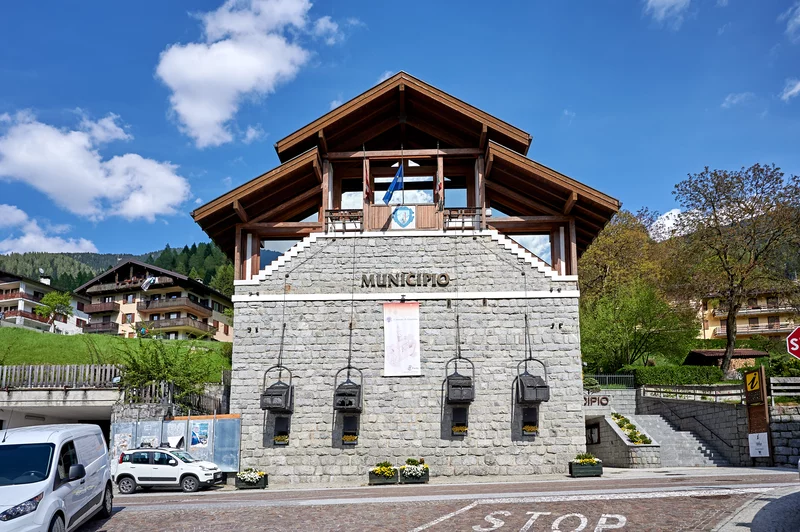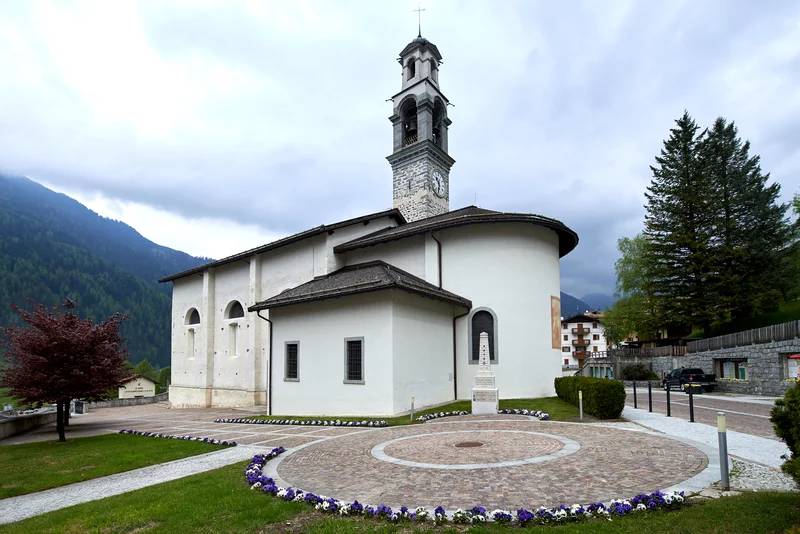The municipal coat of arms depicts the travelling knife grinder, a symbol of the emigration that has deeply marked this community.
In olden times, Giustino undoubtedly appeared as a traditional Alpine village. At the turn of the century, the upper parts of the houses were still entirely made of wood and the large roofs were topped with “scàndole” tiles. The historic core of the village is still full of beautiful houses, with their characteristic wooden gables, wide eaves, granite portals and windows and sacred murals; the stone fountains, the entrance halls, vegetable gardens and walnut trees all paint a typical Alto Rendena picture, while the new dwellings have made it as one with Pinzolo.
Points of interest
Church of Santa LuciaThe church, first mentioned in the early 1200s, has been expanded and altered on multiple occasions over the centuries, such that a portion of the works inside the church have regrettably been lost. This is particularly true of works by Baschenis that originally depicted stories of the saint along with a series of other works depicting the twelve sibyls, the scholars of the church, and the evangelists. The frescoes of the Nativity and of the burial of St. Lucy are attributed to Simone II (although some believe they should be attributed to Simone I) and have been well preserved over the years. The works in the presbytery, carried out in 1536, create a pictorial frame around the majestic wooden altar created in 1530 by the sculptor Stefano Laberti, from Brescia, Italy.
Town HallAs you travel through the Rendena valley along the road from Giustino to Pinzolo, you will see, on your right, signs of the massive excavations that took place for over two centuries in one of the largest quarries of Giustino’s quartz extraction complex. It was 1797 when Giuseppe Bormioli, a businessman from Altare (in the province of Savona), founded a glass factory in Val d’Algone specialising in the production of sheets of glass. For this type of product, quartz feldspar is preferred for its great strength, and because Bormioli had found a great deal of this material in the mountains above Massimeno and Giustino, he had these communities issue mining permits to him. When the glass factories closed, the early history of the Giustino quarries, too, came to an end. It was in 1942 that Officine Elettriche Trentine began looking again at the rich veins of quartz in the area of Ragada in the upper Flanginech valley. A cable lift was designed and constructed in order to transport the material from the quarry to the collection station below. This imposing building in a central position, was later transformed into the current town hall. Following World War II, the Maffei family took charge and oversaw the quarry until it was eventually closed towards the end of 2006.

